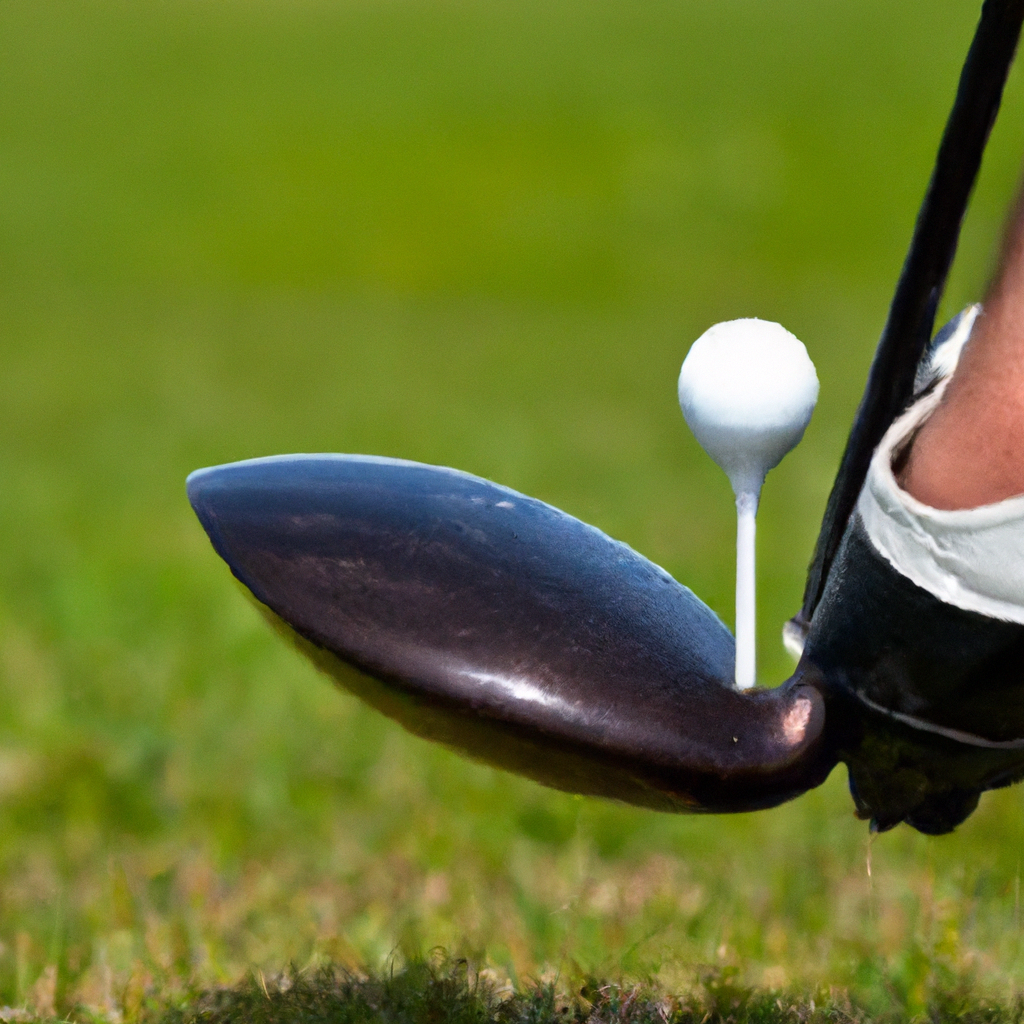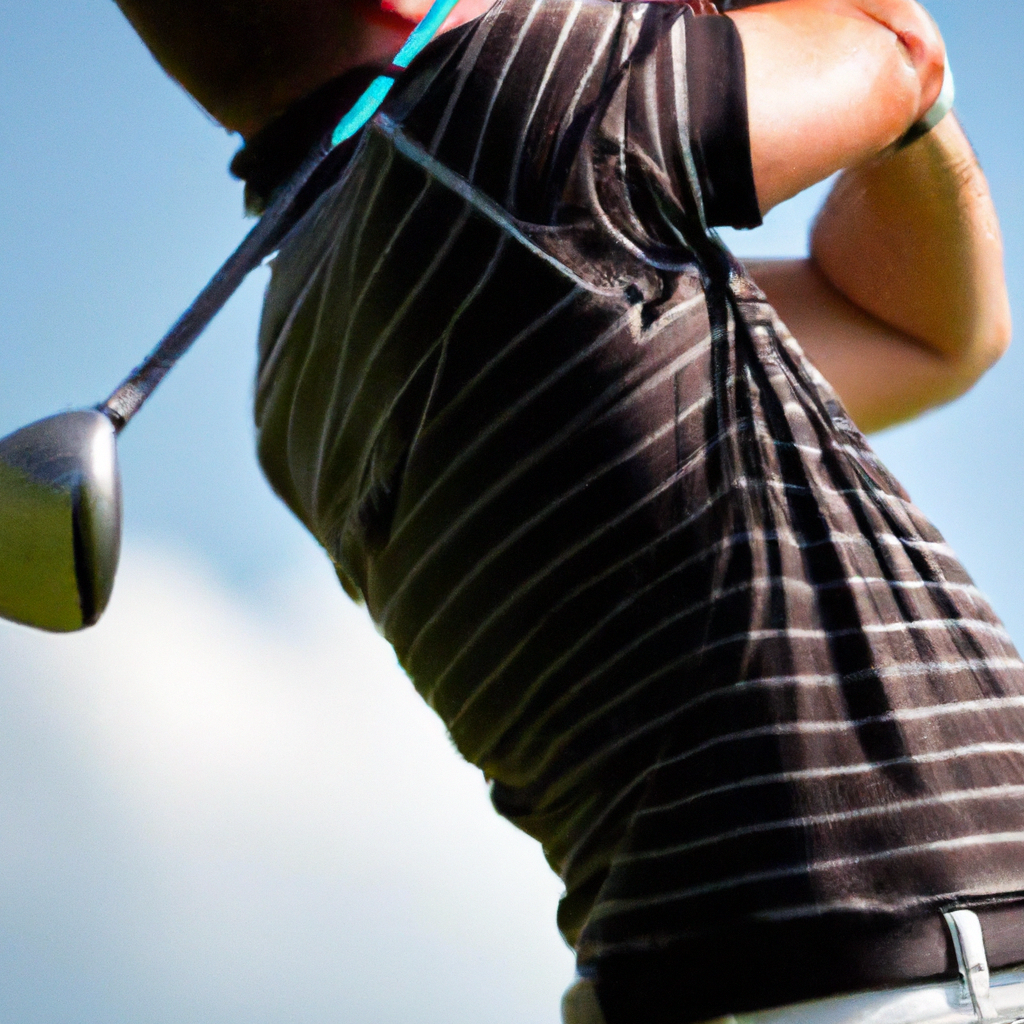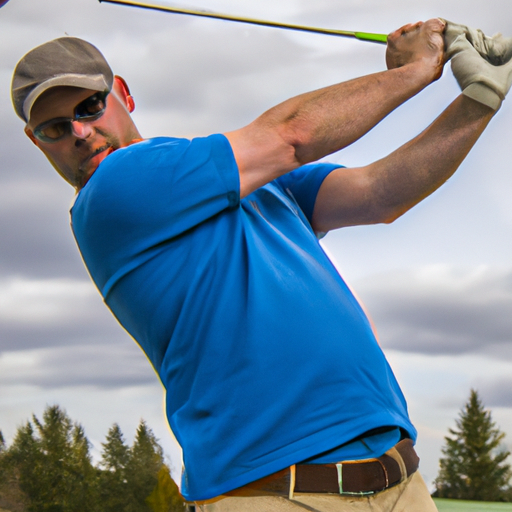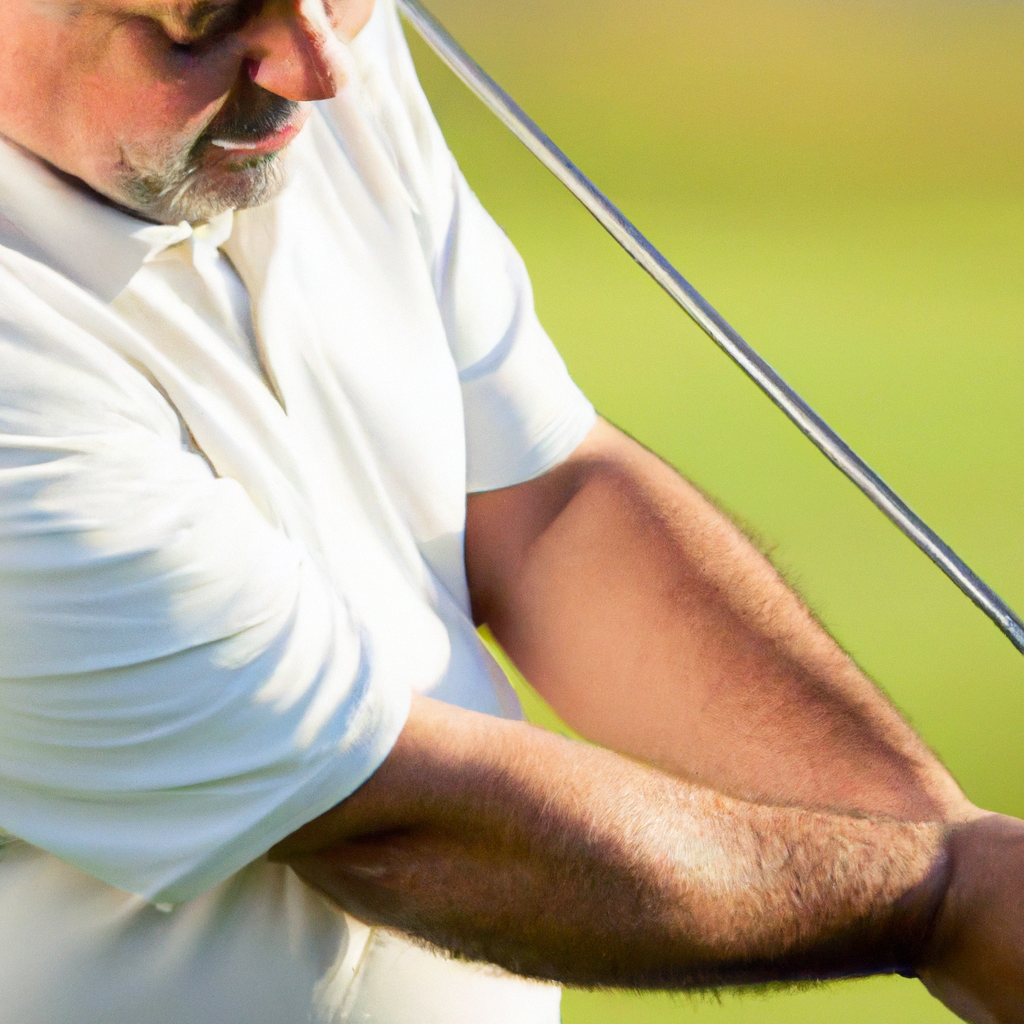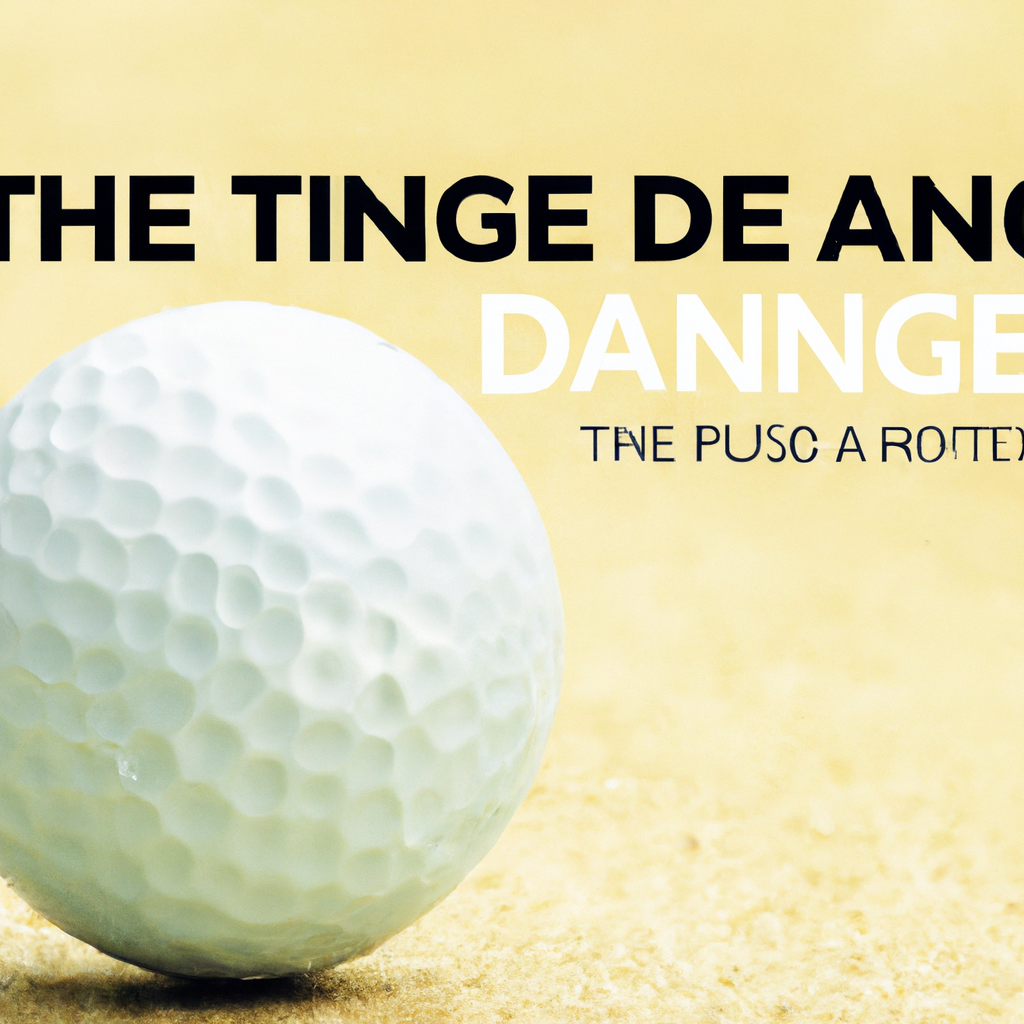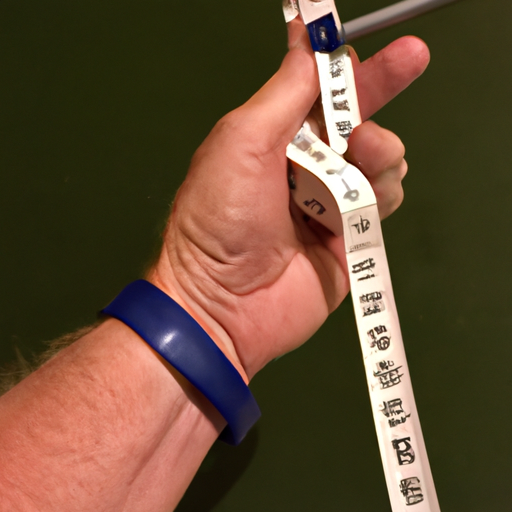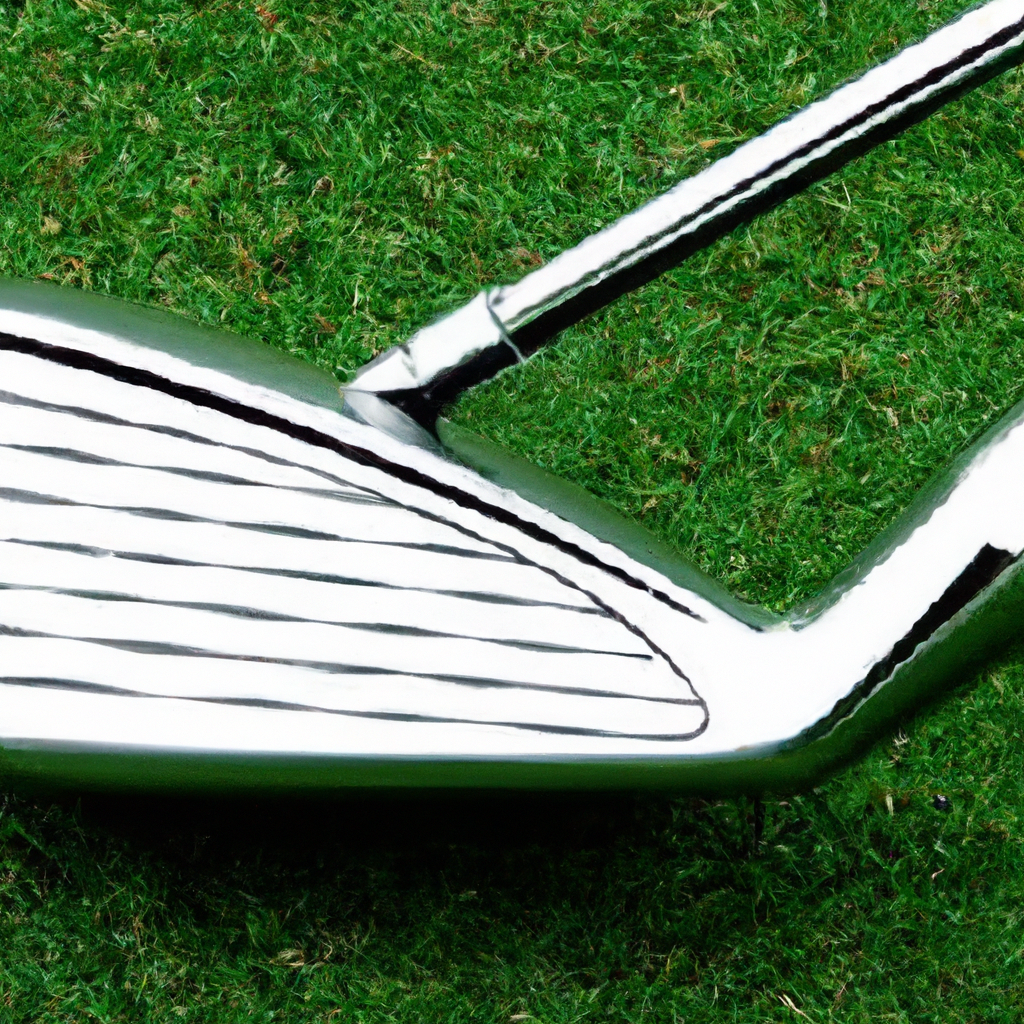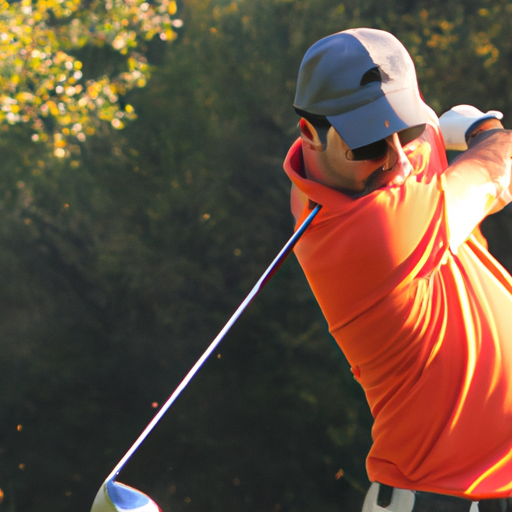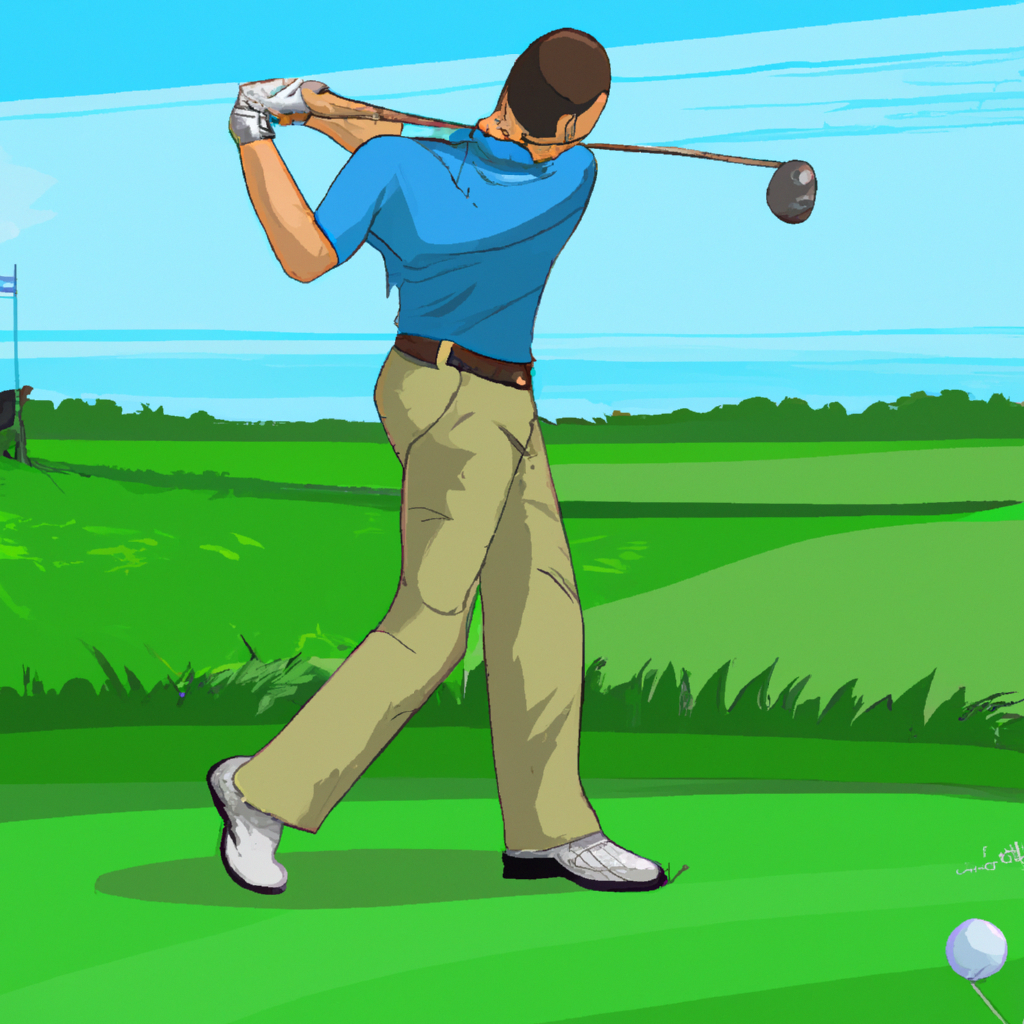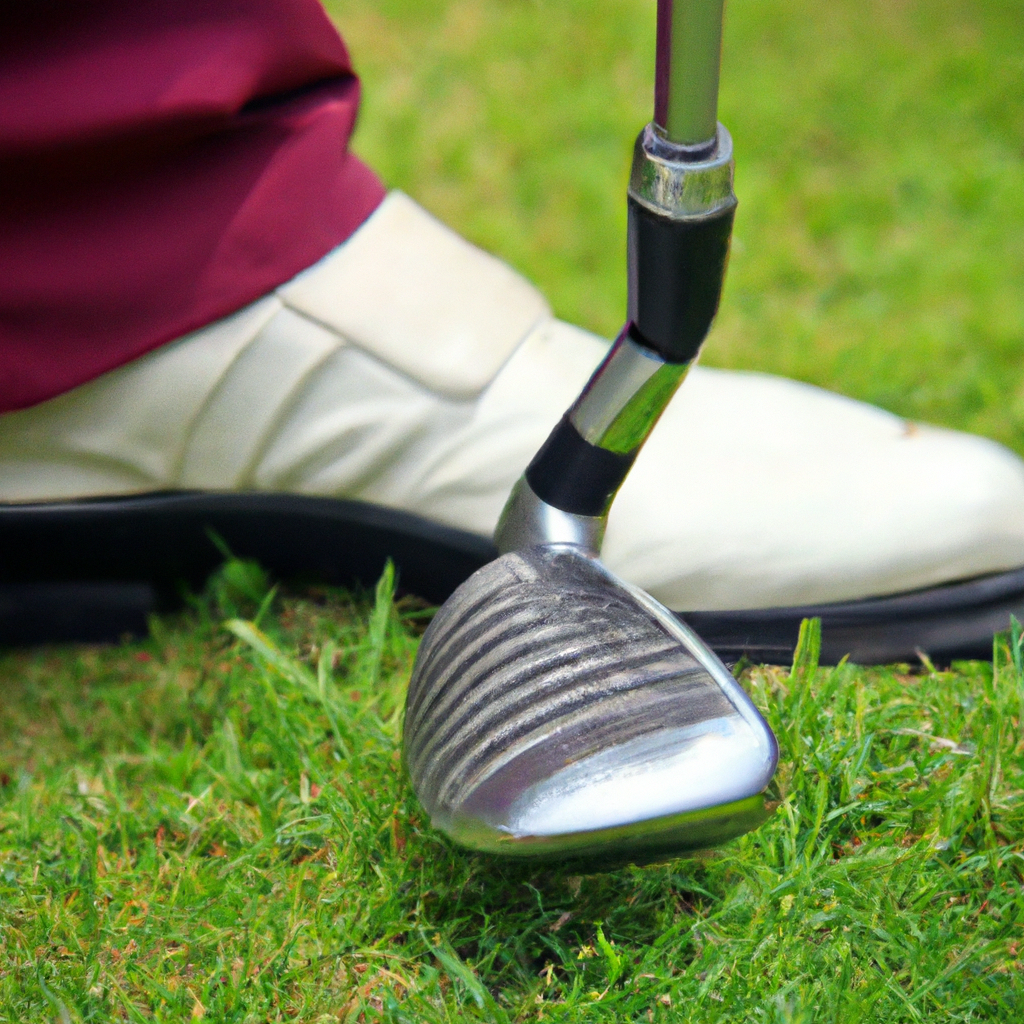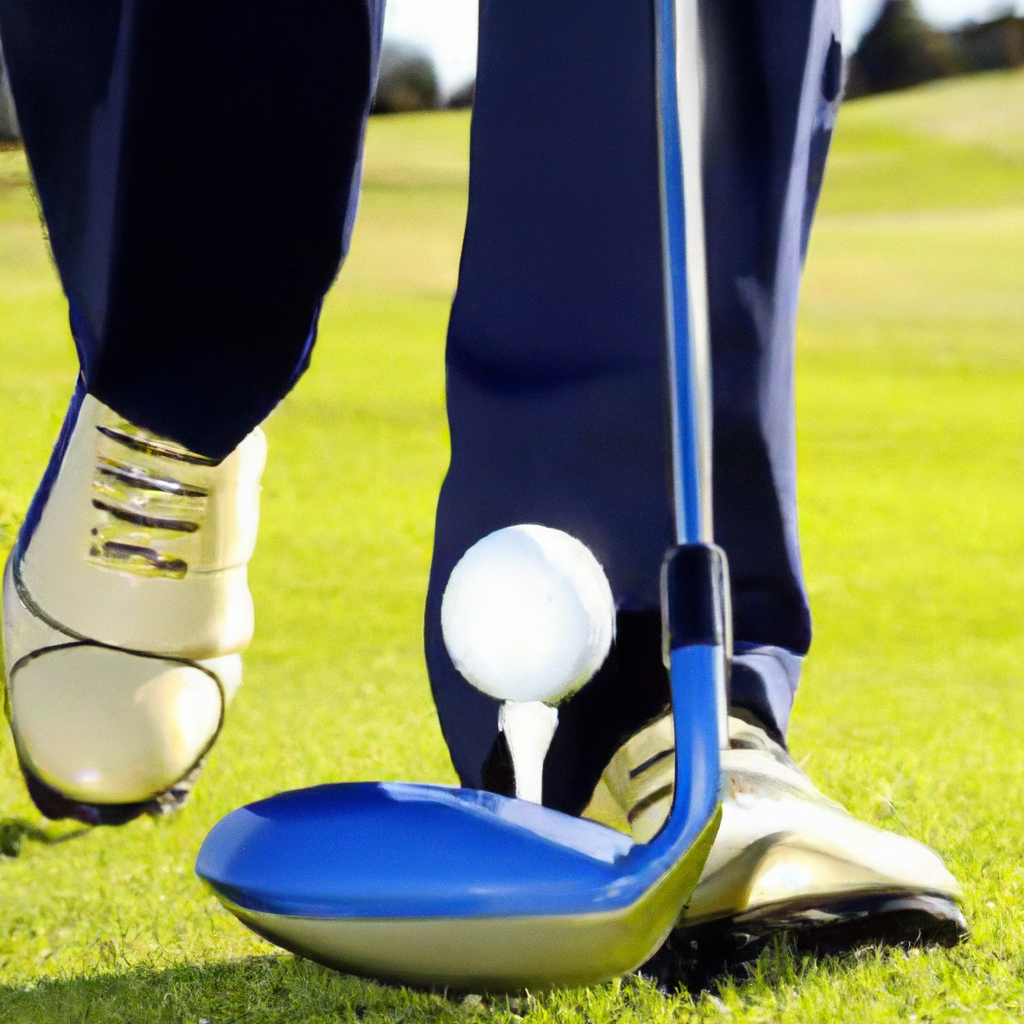Are you struggling to improve your golf swing and wondering how to stay down? Look no further! In this article, we will share some valuable tips and techniques to help you master the golf swing and enhance your game. By focusing on staying down throughout your swing, you can achieve better control, greater power, and ultimately improve your overall performance on the golf course. So, let’s dive in and discover the secrets to a more successful golf swing!

Understanding the Importance of Staying Down on Your Golf Swing
When it comes to achieving a solid and consistent golf swing, staying down throughout the entire motion is crucial. Staying down refers to maintaining the proper body alignment, balance, and posture throughout the swing, and it directly affects the accuracy, power, and control of your shots. By understanding the importance of staying down on your golf swing, you can improve your game and take it to the next level.
Proper Body Alignment and Balance
Proper body alignment and balance are the foundations of a good golf swing. When addressing the ball, it’s essential to align yourself correctly with the target, keeping your feet, knees, hips, and shoulders parallel to the target line. By doing so, you set yourself up for a consistent and repeatable swing.
Balance is equally important and plays a significant role in maintaining stability throughout your swing. It involves distributing your weight evenly between your feet and finding your center of gravity. This balanced stance allows for a smooth transfer of weight during the swing, leading to increased power and control.
Maintaining a Stable Lower Body
Your lower body plays a crucial role in creating power and stability in your golf swing. By maintaining a stable lower body, you can effectively generate force and maintain control throughout the swing.
One way to achieve stability in the lower body is by ensuring that your knees are slightly flexed during the setup and throughout the swing. Flexed knees provide a solid foundation and allow for a smoother weight transfer from backswing to downswing.
Additionally, keeping your lower body stable involves resisting the urge to sway or slide laterally during the swing. Instead, focus on maintaining your posture and rotating around your spine. This stability ensures that your swing remains consistent, resulting in improved ball striking and accuracy.
The Role of Your Core Muscles
A strong and engaged core is essential for a powerful and consistent golf swing. The core muscles, including the abdominals, obliques, and lower back, provide stability and transfer energy from the upper body to the lower body and vice versa.
To engage your core during the swing, focus on maintaining good posture and activating your abdominal muscles. By doing so, you create a solid base for your swing and allow for a more efficient transfer of power. Incorporating exercises that target the core, such as planks and rotational exercises, can also help strengthen these muscles and improve your swing stability.
Developing Proper Hand Positioning
Proper hand positioning is crucial for achieving proper grip and control of the club throughout the swing. When gripping the club, make sure your hands are positioned neutrally, neither too far forward nor too far back. This neutral grip allows for better control and prevents unwanted manipulation of the clubface.
Additionally, pay attention to the pressure applied by your hands on the club. Gripping the club too tightly can restrict your swing and lead to tension in your arms and hands. Conversely, gripping too lightly can result in a lack of control. Find the balance that allows for a relaxed but firm grip, giving you control and consistency in your swing.
Mastering the Fundamentals of a Good Golf Swing
To develop a consistent and effective golf swing, mastering the fundamentals is essential. By focusing on grip, stance, tempo, and ball focus, you can lay a solid foundation for a powerful and accurate swing.
Grip the Club Correctly
One of the most critical fundamentals of a good golf swing is the correct grip. A proper grip ensures that the clubface remains square at impact, allowing for consistent and accurate ball striking.
When gripping the club, ensure that the club is placed diagonally across the fingers of your lead hand (left hand for right-handed golfers, right hand for left-handed golfers). The grip should be firm but not overly tense, with the “V” formed by your thumb and index finger pointing towards your rear shoulder.
Next, place your trail hand (right hand for right-handed golfers, left hand for left-handed golfers) on the club, overlapping the lead hand’s little finger. This overlapping grip provides stability and club control during the swing.
Establish a Solid Stance
A solid and balanced stance is the foundation for a consistent and powerful golf swing. When addressing the ball, position your feet shoulder-width apart and align them parallel to the target line.
Distribute your weight evenly between both feet and slightly favor the balls of your feet. This balanced stance allows for better weight transfer during the swing and maintains stability throughout.
Additionally, ensure that your knees are flexed slightly and your spine is straight. Maintaining this posture helps facilitate a proper rotation of the torso and promotes a solid and consistent swing.
Maintain a Consistent Tempo
The tempo of your golf swing refers to the rhythm and timing of your swing motion. A consistent and smooth tempo allows for better clubface control and more accurate ball striking.
To establish a consistent tempo, focus on maintaining a smooth and even rhythm throughout your swing. Avoid rushing or jerking the club during the backswing and downswing. Instead, strive for a seamless transition from backswing to downswing, with the same tempo and pace throughout.
You can practice your tempo by counting in your head or using a metronome to establish a consistent beat. By ingraining a consistent tempo into your swing, you can improve your timing and achieve better results on the course.
Keep Your Eyes on the Ball
Maintaining focus on the ball throughout your swing is crucial for accuracy and consistency. By keeping your eyes on the ball, you ensure that your clubface is aligned correctly at impact and that your swing stays on the desired path.
As you address the ball, fix your gaze on the back of the ball and maintain that focus throughout the swing. Avoid the temptation to look up early or follow the flight of the ball before completing your swing. Keeping your eyes on the ball allows for better concentration and improves your chances of solid ball striking.
Developing Power and Distance through a Proper Golf Swing
While accuracy and consistency are essential in golf, increasing power and distance can take your game to new heights. By incorporating specific techniques and focusing on generating power, you can maximize the potential of your swing.
Generating Speed with a Coiled Body
One way to develop power in your swing is by utilizing a coiling motion in your backswing. As you take the club back, focus on rotating your shoulders and upper body against a stable lower body. This coiling action stores energy and allows you to unleash it during the downswing, resulting in increased clubhead speed and distance.
To enhance this coiling action, work on improving your flexibility and rotational range of motion. Regular stretching exercises and mobility drills can help increase your ability to rotate, leading to a more powerful swing.
Utilizing Proper Shoulder Rotation
Shoulder rotation is a key component of a powerful golf swing. By properly rotating your shoulders during the backswing and downswing, you can generate more clubhead speed and achieve greater distance.
During the backswing, focus on turning your lead shoulder (left shoulder for right-handed golfers, right shoulder for left-handed golfers) behind the ball while maintaining a stable lower body. This rotation creates torque in your upper body, storing energy that can be released during the downswing.
As you transition into the downswing, allow your trail shoulder (right shoulder for right-handed golfers, left shoulder for left-handed golfers) to rotate aggressively towards the target. This aggressive rotation generates additional clubhead speed, resulting in longer and more powerful shots.
Creating Lag for Added Power
Lag refers to the angle between the club shaft and your lead arm during the downswing. Creating and maintaining lag in your swing is crucial for generating power and distance.
To create lag, focus on initiating the downswing by using your lower body and maintaining a firm lead wrist. As you start the downswing, resist the urge to release the club early and instead allow the clubhead to trail behind your hands. This delay in releasing the club creates stored energy and promotes a whip-like effect as you strike the ball.
Maintaining lag ensures that you’re transferring maximum power to the ball, resulting in longer shots. Practice drills that help you feel this lag and work on your timing and sequencing to optimize this power-producing element of your swing.
Engaging the Lower Body for Distance
To maximize the power and distance in your golf swing, it’s essential to engage your lower body effectively. By harnessing the power of your legs, hips, and glutes, you can generate significant force and achieve greater distance.
As you initiate the downswing, focus on initiating the movement with your lower body. Shift your weight onto your lead foot while driving your hips forward and rotating them towards the target. This lower body movement generates a powerful and efficient transfer of energy from the ground up, resulting in increased clubhead speed and distance.
Additionally, ensure that your lower body remains stable and balanced throughout the swing. Avoid excessive lateral movement or sliding, as it can disrupt your sequencing and decrease power transfer. By properly engaging your lower body, you can unlock its potential to enhance your golf swing’s power and distance.

Improving Accuracy and Control in Your Golf Swing
While power and distance are desirable, accuracy and control are equally important aspects of a good golf swing. By focusing on improving your aim, clubface control, and follow-through, you can enhance your ability to hit the ball where you want it to go.
Having a Target-Oriented Mindset
Accuracy begins with having a target-oriented mindset. Before every shot, visualize your intended target and focus on hitting the ball towards that target. By developing a clear mental image, you can align your swing and clubface correctly, leading to more accurate shots.
Additionally, maintaining a positive and confident attitude towards your target can improve your focus and decision-making on the course. Trust in your swing and commit to your chosen target, allowing your body to execute the swing without hesitation.
Aiming with Precision
Precision in aiming involves aligning your body and clubface correctly towards the target. When addressing the ball, ensure that your feet, knees, hips, and shoulders are parallel to the target line. This alignment helps set you up for a square and accurate impact with the ball.
Moreover, pay attention to the clubface’s alignment. The face of the club should be square to your target line, ensuring that you’re not inadvertently aiming left or right of your intended target. Developing a consistent and accurate alignment routine can help you confidently address the ball and increase your accuracy on the course.
Controlling the Clubface at Impact
The position and control of the clubface at impact have a significant influence on the ball’s trajectory and direction. Developing a solid impact position and clubface control is crucial for accuracy and consistency.
At impact, the clubface should be square to the target. To achieve this square impact, focus on maintaining good hand and wrist position throughout the swing. Avoid early or excessive release of the clubhead, as it can result in an open or closed face, leading to wayward shots.
Additionally, pay attention to your grip pressure as you approach impact. A light but firm grip allows for better control and manipulation of the clubface, leading to more accurate ball striking. Continued practice and awareness of your clubface control at impact can help you consistently hit your desired targets.
Implementing a Smooth and Controlled Follow-Through
The follow-through is often overlooked but plays a crucial role in maintaining control and accuracy throughout the entire swing. A smooth and controlled follow-through helps ensure that your swing remains on the desired path and promotes a consistent ball flight.
During the follow-through, focus on maintaining good posture and balance. Allow your body to naturally rotate towards the target, with your chest facing towards the sky. Avoid any sudden or jerky movements that can disrupt the flow of your swing.
Additionally, pay attention to the position of your arms and hands during the follow-through. Aim to keep your lead arm straight and extended, allowing for a full and complete finish to your swing. By implementing a smooth and controlled follow-through, you can enhance your swing’s accuracy and control.
Addressing Common Swing Faults and Correcting Them
Even the most skilled golfers experience swing faults from time to time. Recognizing and addressing these common swing faults is crucial for improving your game and preventing persistent issues that can hinder your progress.
Overcoming the Tendency to Lift the Ball
A common swing fault amongst beginner golfers is the tendency to lift the ball instead of striking down on it. This lifting motion results in poor contact and inconsistent ball flights.
To overcome this fault, focus on maintaining a downward strike on the ball. During your swing, envision hitting through the bottom of the ball and into the ground. This mental image encourages a descending blow, leading to better contact and increased control.
Additionally, pay attention to your setup and ball position. Position the ball slightly forward in your stance, ahead of the center of your chest. This forward ball position promotes a steeper angle of approach and encourages a downward strike.
Eliminating the Slice or Hook
The slice and hook are common shot shapes that can lead to significant accuracy problems. A slice refers to a shot that curves severely from left to right for right-handed golfers (or right to left for left-handed golfers), while a hook curves severely from right to left for right-handed golfers (or left to right for left-handed golfers).
To correct a slice, focus on improving your clubface alignment at impact. Ensure that the clubface is square to the target and avoid an open face at impact. Additionally, concentrate on a smoother swing path that promotes an inside-to-square-to-inside swing plane.
For those dealing with a hook, the opposite adjustments are required. Pay attention to your clubface alignment, making sure it’s not excessively closed at impact. Work on a more neutral swing path that avoids an inside-to-outside motion.
Seeking professional instruction or guidance can provide personalized feedback and tailored drills to help correct these swing faults effectively.
Preventing Early Extension of the Body
Early extension refers to the tendency of the lower body to move towards the ball during the downswing, disrupting your swing’s sequencing and balance. This fault can lead to inconsistent strikes and loss of power.
To prevent early extension, focus on maintaining your posture and staying in your address position throughout the swing. Avoid any excessive or premature movement towards the ball with your lower body. Instead, strive for a rotational motion where your upper body rotates around a stable lower body.
You can also incorporate drills that promote proper sequencing and lower body stability. For example, practice swings with a resistance band wrapped around your hips can help you feel the correct rotational movement while preventing early extension.
Avoiding Casting or Scooping the Ball
Casting refers to the premature release of the clubhead during the downswing, resulting in weak and inconsistent ball striking. Scooping, on the other hand, involves lifting the hands and scooping the ball at impact, leading to shallow contact and decreased power.
To avoid casting and scooping, focus on maintaining good wrist position throughout your swing. During the downswing, keep your lead wrist flat and your trail wrist bent. This position helps delay the release of the clubhead, creating lag and ensuring a descending strike at impact.
Practicing drills that promote proper wrist position, such as the “pump drill,” can help you ingrain this feeling. By eliminating casting and scooping from your swing, you can achieve more consistent and powerful ball striking.
Practicing and Drilling for a Better Golf Swing
Consistent practice is key to improving your golf swing and refining your skills. By incorporating purposeful repetitions, utilizing training aids and technology, working on alignment and setup, and practicing with a variety of clubs, you can optimize your practice sessions and make significant progress in your game.
Incorporating Purposeful Repetitions
When practicing your golf swing, aim for quality repetitions rather than mindless hitting. Each swing should have a specific goal or focus, whether it’s working on maintaining balance, improving ball striking, or refining a particular aspect of your swing.
Break your practice sessions into smaller segments, dedicating focused time to specific areas of improvement. This deliberate and targeted approach allows you to address weaknesses and make the necessary adjustments, leading to more significant improvements.
Using Training Aids and Technology
Training aids and technology can be valuable tools for refining your golf swing. They provide real-time feedback and help you develop proper mechanics, improve balance, and increase clubhead speed.
For example, a golf swing analyzer can track your swing metrics, such as clubhead speed, ball speed, and swing path. This data allows you to identify areas of improvement and track your progress over time.
Additionally, consider incorporating training aids such as alignment sticks, impact bags, or swing trainers into your practice routine. These aids provide physical feedback and help develop proper swing positions and mechanics.
Working on Alignment and Setup
Alignment and setup are fundamental elements of a good golf swing. Spending time working on your alignment and setup can greatly impact your swing consistency and accuracy.
During your practice sessions, focus on aligning your feet, knees, hips, and shoulders parallel to the target line. Use alignment sticks or visual markers to ensure your alignment is accurate.
Additionally, pay attention to your posture, spine angle, and ball position during your setup. Proper posture promotes a natural and efficient swing motion, while the correct ball position allows for solid contact.
Practicing with a Variety of Clubs
To develop a well-rounded golf swing, it’s essential to practice with a variety of clubs. Each club in your bag presents unique challenges and requires different swing mechanics and ball striking techniques.
Dedicate time to practicing with your driver, fairway woods, long irons, mid-irons, short irons, and wedges. This comprehensive approach allows you to develop consistency and adaptability across your entire set of clubs.
By incorporating a variety of clubs into your practice routine, you’ll become more comfortable and confident with each club, leading to improved shot-making and lower scores.
Developing a Pre-Shot Routine to Enhance Your Golf Swing
A pre-shot routine is a sequence of steps and rituals performed before every shot. By establishing a consistent pre-shot routine, you can enhance your golf swing’s overall consistency, mental focus, and shot execution.
Establishing a Consistent Routine
Your pre-shot routine should be consistent and repeatable, helping you transition from the planning phase to the execution phase comfortably. Develop a routine that works for you and encompasses the necessary elements to prepare for your shot effectively.
Your routine may include visualizing the desired shot, taking a practice swing, aligning yourself with the target, or checking your grip and posture. Stick to this routine consistently, as it helps calm nerves, build confidence, and create a sense of familiarity before each shot.
Visualizing the Desired Swing
Visualization is a powerful tool that can enhance your golf swing and improve shot execution. Before each shot, take a moment to visualize the desired flight path, trajectory, and landing spot of the ball.
Close your eyes and create a vivid mental image of the successful shot you want to hit. See the ball travel through the air and land exactly where you intend it to. By visualizing success, you program your mind and body to execute the swing necessary to achieve that desired outcome.
Focusing on Breathing and Relaxation
Maintaining a relaxed and focused state is vital for executing a good golf swing. Incorporate deep breathing exercises into your pre-shot routine to help calm your nerves and promote mental clarity.
Before stepping up to the ball, take a few deep breaths, inhaling through your nose and exhaling through your mouth. Pay attention to your breath, allowing it to slow down your heart rate and relax any tension in your body. This mindful breathing technique helps you stay present and focused throughout the swing.
Building Confidence through Mental Preparation
Confidence is key to a successful golf swing. Before each shot, consciously build confidence by reflecting on past successes or positive aspects of your game. Remind yourself of shots you’ve executed well or memorable rounds you’ve played.
Avoid dwelling on past mistakes or negative outcomes. Focus on the present moment and the specific shot at hand. By building confidence through positive mental preparation, you increase your belief in your abilities and set the stage for a successful swing.
Using Video Analysis to Improve Your Golf Swing
Video analysis is a valuable tool that can help you identify areas for improvement and make necessary adjustments in your golf swing. By recording and reviewing your swing, seeking professional feedback, and tracking progress over time, you can optimize your swing’s mechanics and performance.
Recording and Reviewing Your Swing
Recording your swing allows you to analyze your mechanics and identify areas for improvement that may not be apparent during the swing. Set up a camera or use a smartphone stand to capture your swing from various angles, such as face-on and down the line.
Review the footage in slow motion and pay attention to key elements such as grip, posture, alignment, swing plane, and impact position. Take notes and compare your swing to professional golfers or instructional resources to gain valuable insights into areas that require adjustment.
Identifying Areas for Improvement
Video analysis helps you identify specific areas in your swing that may need improvement. You may notice inconsistencies in your posture, balance, or swing mechanics that could be affecting your ball striking and overall performance.
Use the video analysis to pinpoint these areas and develop an action plan for improvement. Focus on one or two aspects at a time, and incorporate drills or exercises that address those specific areas. Tracking your progress over time will help you see how your adjustments are positively impacting your swing.
Seeking Professional Feedback
While self-analysis through video can be valuable, seeking professional feedback from a qualified golf instructor can provide additional insight and guidance. A golf instructor can offer expert analysis of your swing, identify areas for improvement, and provide personalized drills and exercises to help you make necessary adjustments.
A professional instructor can also help prioritize which areas of your swing to focus on first, ensuring that you’re making efficient progress towards your overall improvement goals. Working with a professional not only accelerates the learning process but also provides accountability and support throughout your journey.
Tracking Progress over Time
Video analysis allows you to track your progress over time by comparing your swings from different sessions. Regularly review your recorded swings to gauge improvements in your mechanics, swing path, and overall consistency.
By tracking your progress, you gain a tangible measure of your improvement and stay motivated to continue working on your golf swing. Celebrate small victories and milestones along the way, as they signify your dedication and progress towards becoming a better golfer.
Optimizing Your Physical Fitness for a Strong Golf Swing
Physical fitness plays a crucial role in your golf swing’s power, consistency, and overall performance. By optimizing your strength, flexibility, balance, and cardiovascular health, you can develop a strong and efficient golf swing.
Building Strength and Flexibility
Strength and flexibility are key components of a powerful and efficient golf swing. Incorporating strength training exercises, such as squats, lunges, and core exercises, enhances your stability and power throughout the swing.
In addition to strength, focus on developing flexibility, especially in your hips, shoulders, and spine. Regular stretching exercises, yoga, or Pilates can improve your range of motion and allow for a more fluid and unrestricted swing.
Incorporating Golf-Specific Exercises
Golf-specific exercises target the muscle groups used during the golf swing and help develop the specific movements and stability required for optimal performance.
Incorporate exercises that mimic the golf swing, such as rotational exercises using a resistance band or cable machine. Additionally, focus on stability exercises that challenge your balance and core strength, as these are key components of a consistent and controlled swing.
Working with a fitness professional experienced in golf-specific training can provide you with a customized workout program tailored to your specific needs and goals.
Improving Balance and Coordination
Balance and coordination are essential for a smooth and controlled golf swing. By incorporating balance training exercises, such as single-leg exercises or standing on stability devices, you can improve your stability and weight transfer during the swing.
Coordination exercises, such as ladder drills or medicine ball tosses, help enhance your body’s ability to precisely coordinate movements and timing. These exercises can translate directly to improved swing mechanics and ball striking.
Maintaining Overall Cardiovascular Health
Cardiovascular health is often overlooked but crucial for overall well-being and performance on the course. Maintaining a healthy cardiovascular system improves your endurance, focus, and energy levels during a round of golf.
Incorporate cardiovascular exercise into your routine, such as brisk walking, jogging, cycling, or swimming. Aim for at least 150 minutes of moderate-intensity aerobic activity per week, or alternatively, 75 minutes of vigorous-intensity aerobic activity.
By optimizing your physical fitness, you can enhance your golf swing’s power, consistency, and endurance. A strong and fit body allows you to execute the desired movements efficiently and helps prevent injuries on and off the golf course.
Seeking Professional Instruction and Guidance
While individual practice and self-improvement are valuable, seeking professional instruction and guidance can significantly accelerate your progress and help you avoid common pitfalls. Working with a qualified golf instructor, participating in golf clinics or workshops, and seeking individualized coaching can provide you with the support and expertise needed to reach your full potential.
Working with a Qualified Golf Instructor
A qualified golf instructor offers personalized instruction and guidance tailored to your specific needs and goals. They have the knowledge and experience to analyze your swing mechanics, correct swing faults, and provide drills and exercises for improvement.
Working with a golf instructor can help you understand the nuances of your swing, develop proper practice habits, and develop a clear improvement path. They can also provide on-course guidance, helping you navigate various situations and develop course management strategies.
Taking Advantage of Golf Clinics and Workshops
Golf clinics and workshops offer opportunities to learn and improve your golf swing in a group setting. These events are often led by professionals or teaching staff and cover various aspects of the game, from swing mechanics to short game skills.
Participating in golf clinics can expose you to different teaching methods, provide a social and supportive environment, and offer valuable practice and feedback opportunities. These events can be especially beneficial for beginner golfers looking to develop a solid foundation in their golf swing.
Participating in Golf Lessons or Camps
Golf lessons or camps provide access to concentrated and focused instruction over an extended period. Lessons can be tailored to your specific needs, allowing for intensive work on specific aspects of your golf swing within a short timeframe.
Camps offer a more immersive learning experience, typically spanning multiple days and incorporating various elements of the game. They provide an opportunity to fully immerse yourself in golf instruction, practice, and play, allowing for accelerated improvement.
Seeking Individualized Coaching
Individualized coaching provides a personalized and ongoing relationship with an experienced golf instructor. Through regular coaching sessions, you receive consistent guidance, feedback, and accountability, enabling continuous improvement.
Individual coaching can target specific areas of your golf swing, address swing faults, and develop a comprehensive improvement plan. Your coach becomes a trusted advisor and mentor, helping you navigate challenges and reach your full potential.
By seeking professional instruction and guidance, you benefit from their expertise, experience, and personalized approach. Whether you’re a beginner looking to build a solid foundation or an advanced player looking to fine-tune your swing, professional guidance can be instrumental in your golfing journey.
In conclusion, understanding and implementing the various aspects discussed in this article can significantly enhance your golf swing. By focusing on proper body alignment and balance, mastering the fundamentals, developing power and distance, improving accuracy and control, addressing common swing faults, practicing and drilling, developing a pre-shot routine, using video analysis, optimizing physical fitness, and seeking professional instruction, you can refine your swing mechanics, increase your consistency, and ultimately improve your game. Embrace the opportunity to develop a better golf swing and watch as your scores and enjoyment on the course improve. Happy golfing!




